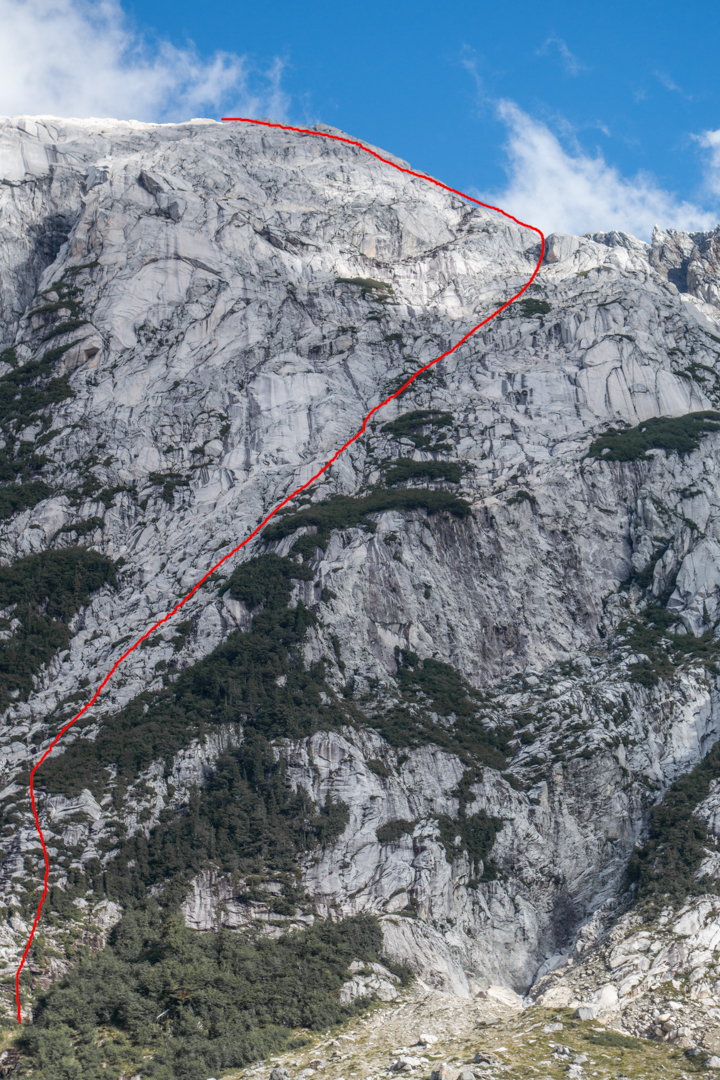Cerro Mariposa, Produci Consuma Crepa
Argentina-Chile, Northern Patagonia, Turbio Valley
 Paolo Marazzi and I (both Ragni de Lecco members) traveled to Argentina in February with the goal of climbing Cerro Mariposa. We arrived in Bariloche on February 16. From there, local alpinist Sebastián de la Cruz helped us with logistics, as he’s one of the few who knows much about the remote climbing in the Turbio Valley.
Paolo Marazzi and I (both Ragni de Lecco members) traveled to Argentina in February with the goal of climbing Cerro Mariposa. We arrived in Bariloche on February 16. From there, local alpinist Sebastián de la Cruz helped us with logistics, as he’s one of the few who knows much about the remote climbing in the Turbio Valley.
We waited in Bariloche one week while heavy rains flooded the area. Once on the move, we had to wait two additional days for the Rio Turbio’s water level to drop.
On February 25, we managed to cross the river with horses and started our approach up the valley. After eight hours of riding, we reached the first of two cabanas, a luxury shelter in the woods at the entrance of the Turbio Valley. (Sebastián joined us to this point). From there, in one day by foot, we arrived at the second cabana, a small hut in a flat area close to the walls. It was a nice place, but this marked the beginning of 20 days of rain and rare moments of sun.
Our primary goal was to climb the main northeast face of Cerro Mariposa, to the right of the tower ascended by the 2014 route La Vuelta de los Condores (Leclerc-McSorley-Stanhope-Van Biene). We went to the base three times, always with a single-day window—not enough for this climb.
 We also attempted a nearby 800m wall, where, a few pitches from the top, we retreated due to vegetated and muddy cracks. This wall is up the left (south) branch of the valley, just before a lake. We also simul-soloed a nice route on a wall left of the Oreja, which we called Margherita (900m, low fifth-class) for a friend of Paolo’s who died in an avalanche one month before. However, this could be the same as the 2011 route Earlobe. The elevation of the summit is 2,100m.
We also attempted a nearby 800m wall, where, a few pitches from the top, we retreated due to vegetated and muddy cracks. This wall is up the left (south) branch of the valley, just before a lake. We also simul-soloed a nice route on a wall left of the Oreja, which we called Margherita (900m, low fifth-class) for a friend of Paolo’s who died in an avalanche one month before. However, this could be the same as the 2011 route Earlobe. The elevation of the summit is 2,100m.
After two weeks, we brought most of our equipment (including food, portaledge, and clothes) back down the river, hoping this might allow us to take advantage of a possible window for Cerro Mariposa at the end of our trip, when otherwise we’d need to be packing out. We kept only the essentials for a fast alpine climb and were lucky enough to catch four sunny days at the very end of our stay.
After a failed attempt due to strong wind on March 13, we began the second day by crossing the lake at the base of Cerro Mariposa with our packrafts. We chose a line that seemed possible in just two days. During the prior days it had snowed a lot on the summit—one meter at least. The wall was completely wet, with some waterfalls on our line. But it was our only chance. We started climbing in the evening, fixed a rope on the first pitch, and slept at the base that night.
We began the second day at dawn and climbed all day long. The temperature was nice, but a couple of big rockfalls kissed us, just a few meters away, forcing us to choose a more sheltered line. By the evening we arrived at a big ledge two-thirds way up the wall. Above us were wet roofs capped by the headwall. Sleeping there didn’t seem safe, so we kept on in “night mode.” Climbing the roofs in the dark was pretty relaxing, and later on, a nearly full moon cleared the night. With some free climbing and some aid, we reached the top of the wall at 1 a.m. We continued to the summit by easy rock scrambling and snow walking. One hour later we found a good bivy spot in the snow close to the summit.
The following day we rappelled our line, and the same evening we were back at base camp. The following day we descended to the lower cabana with our equipment, loaded our packrafts with 50kg of gear, and descended the Rio Turbio until Lago Puelo. We called our route Produci Consuma Crepa (900m, 6c A2).
– Luca Schiera, Italy







